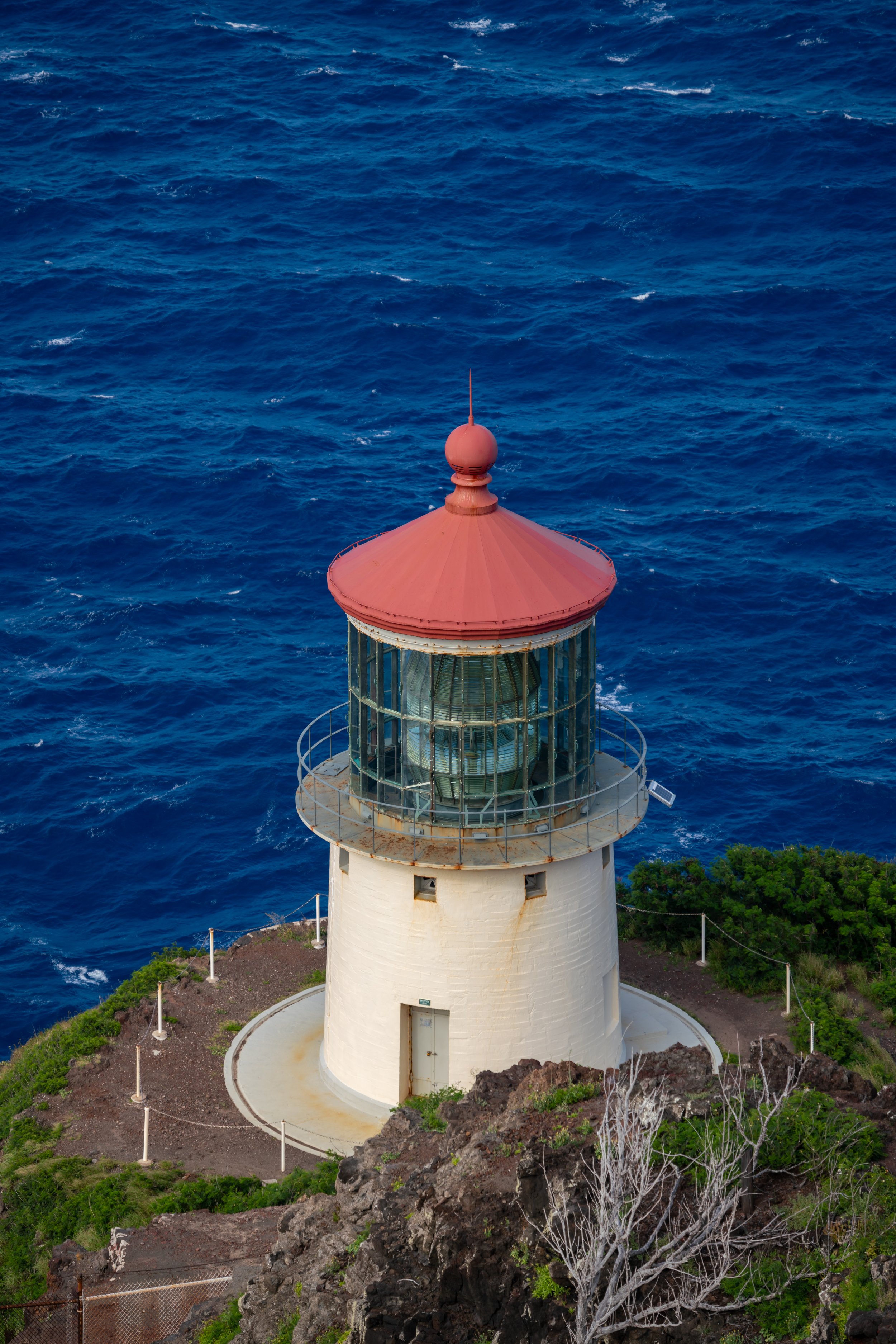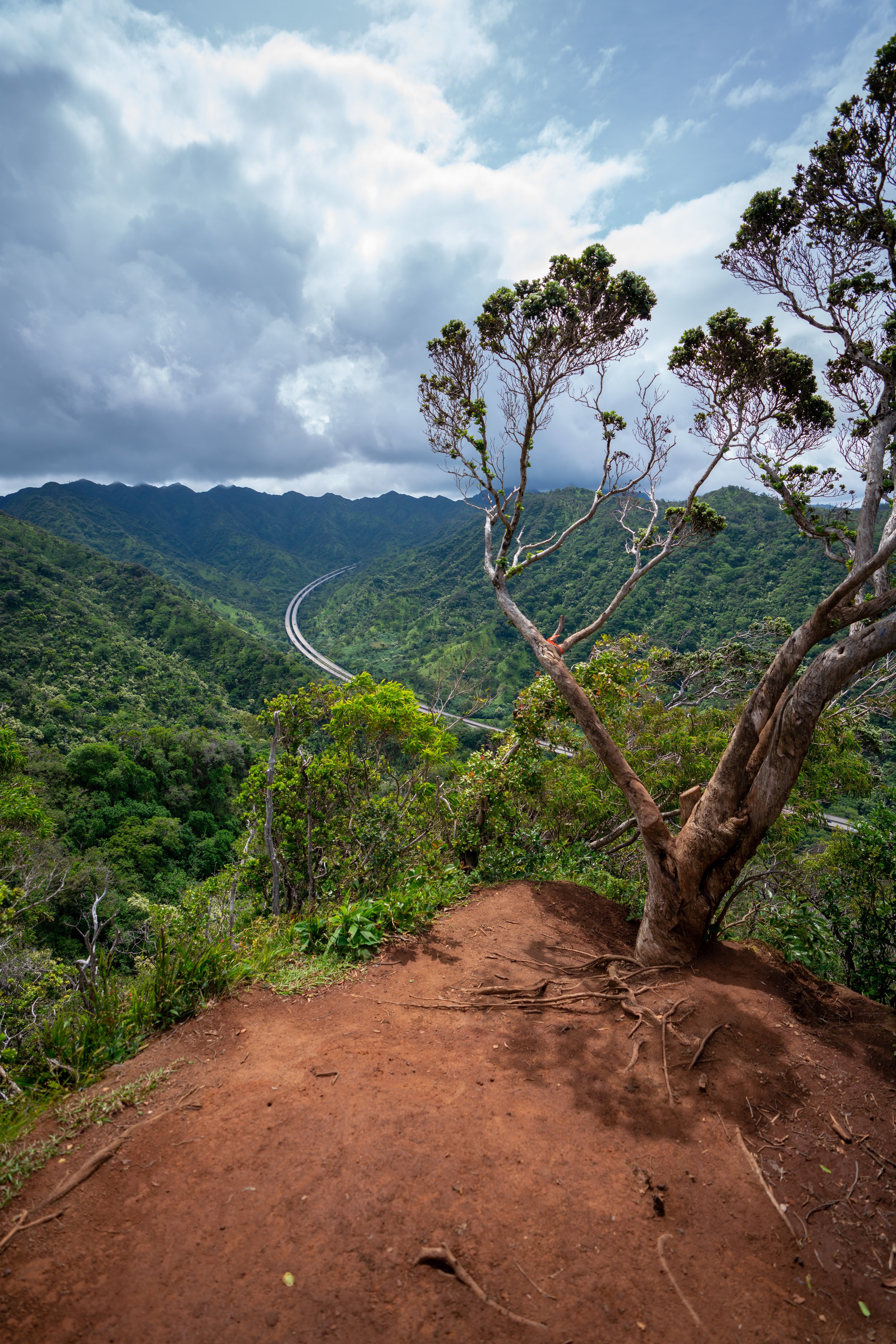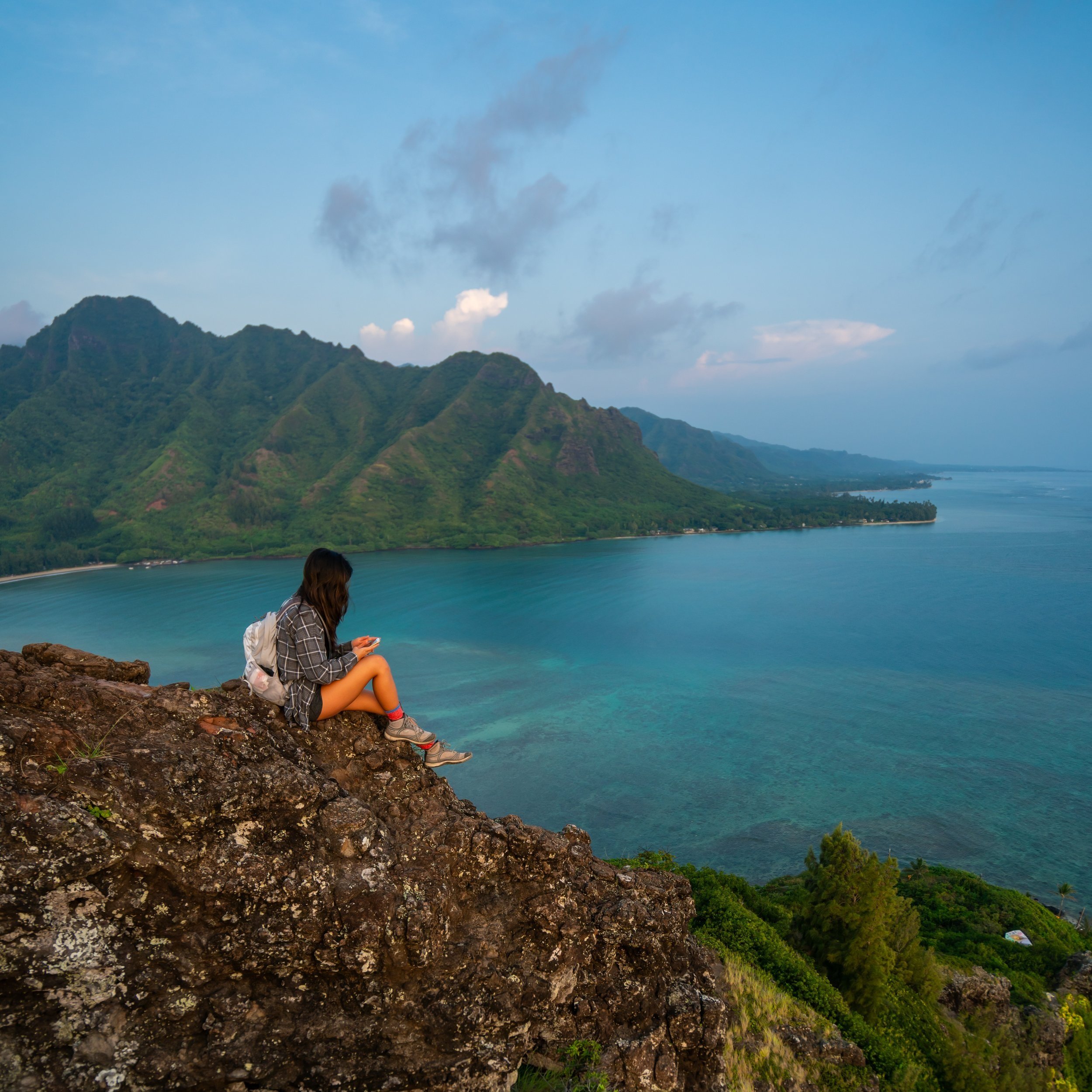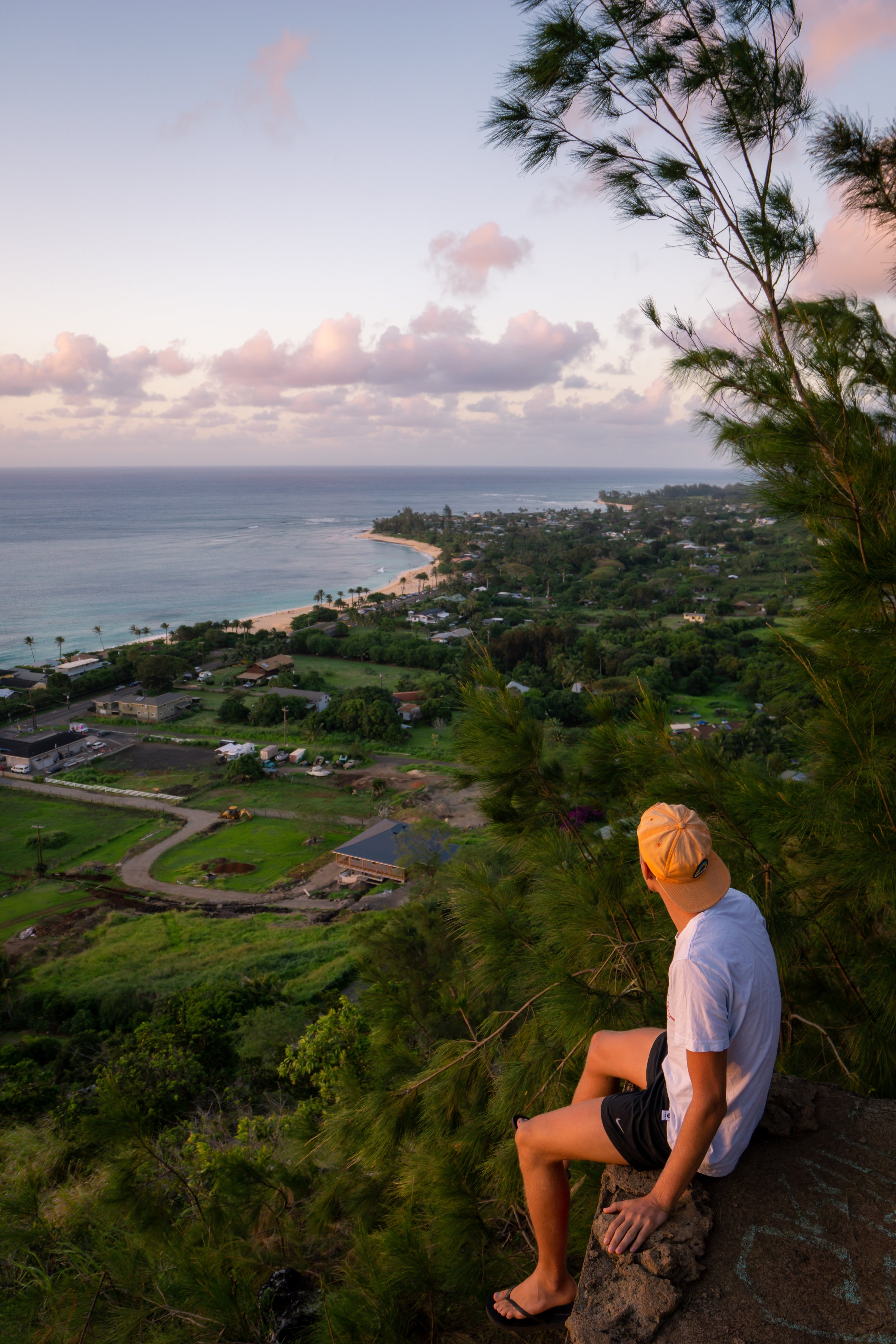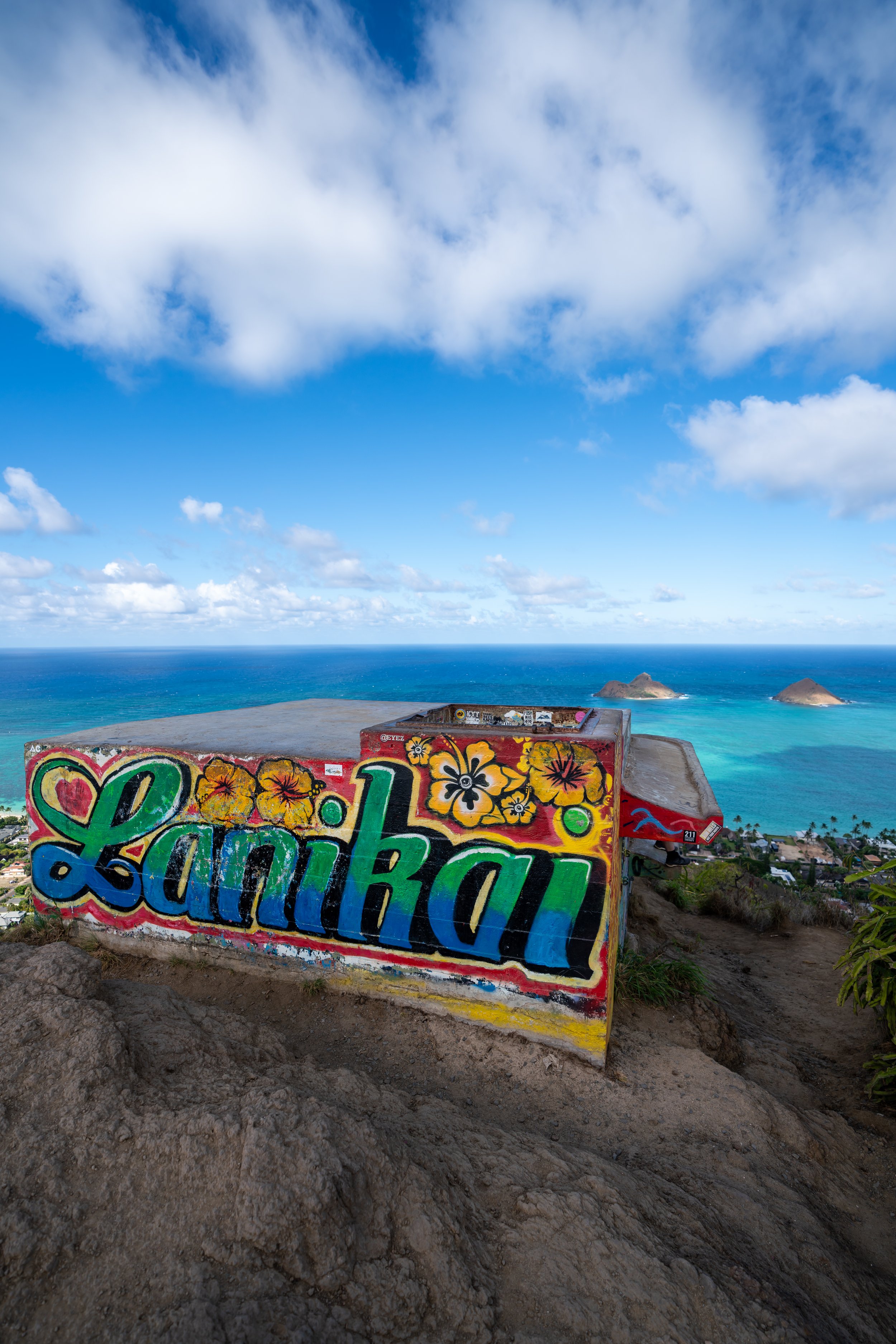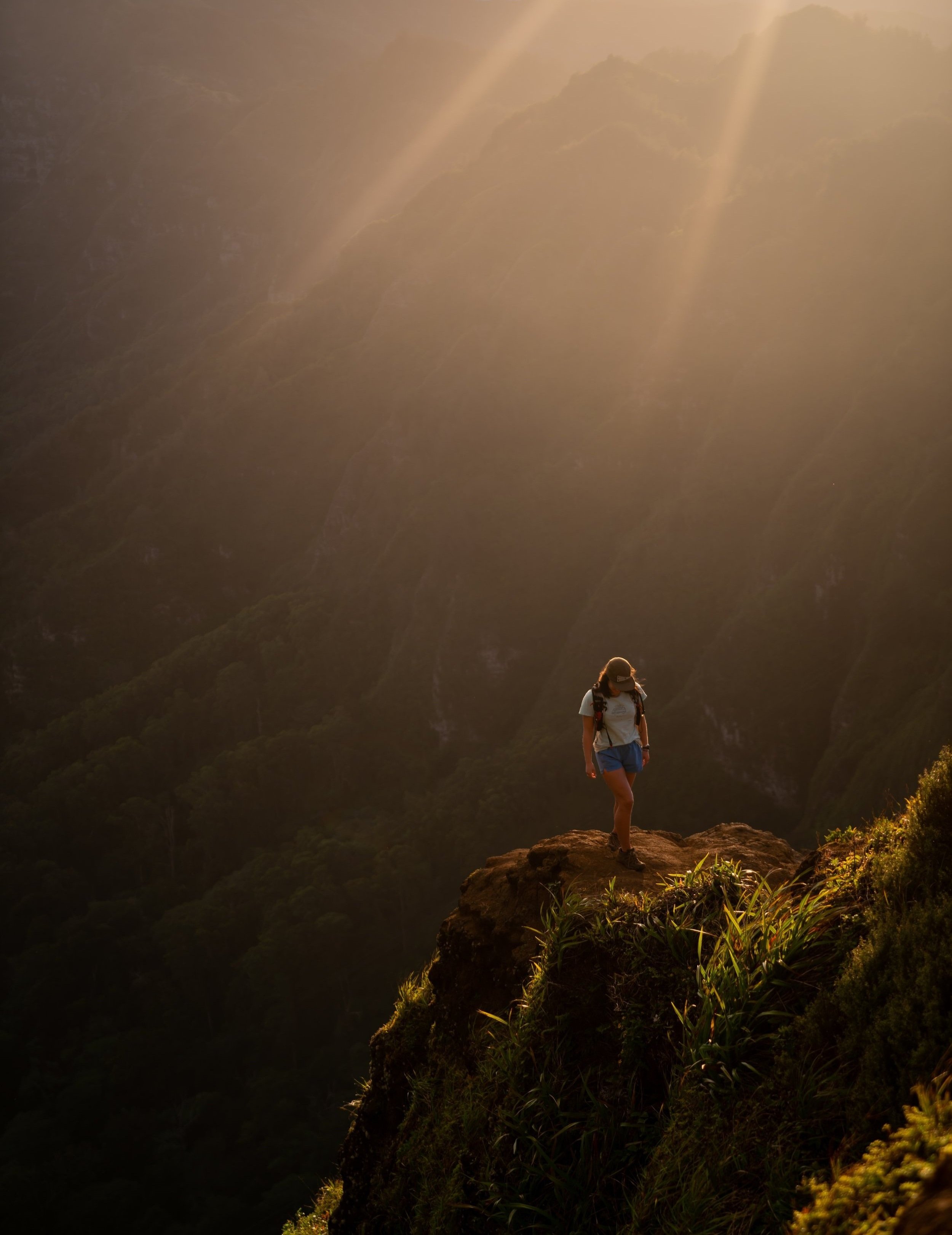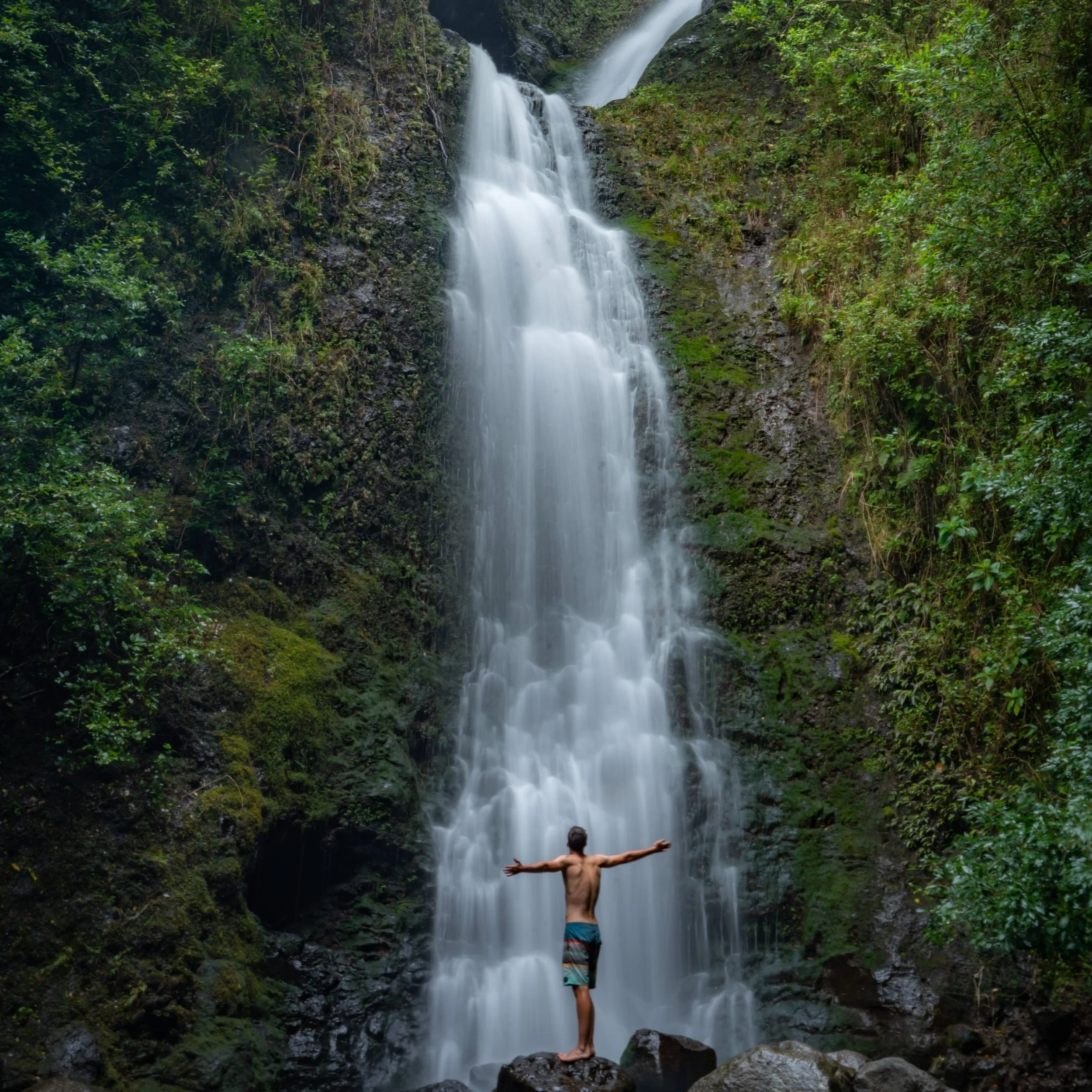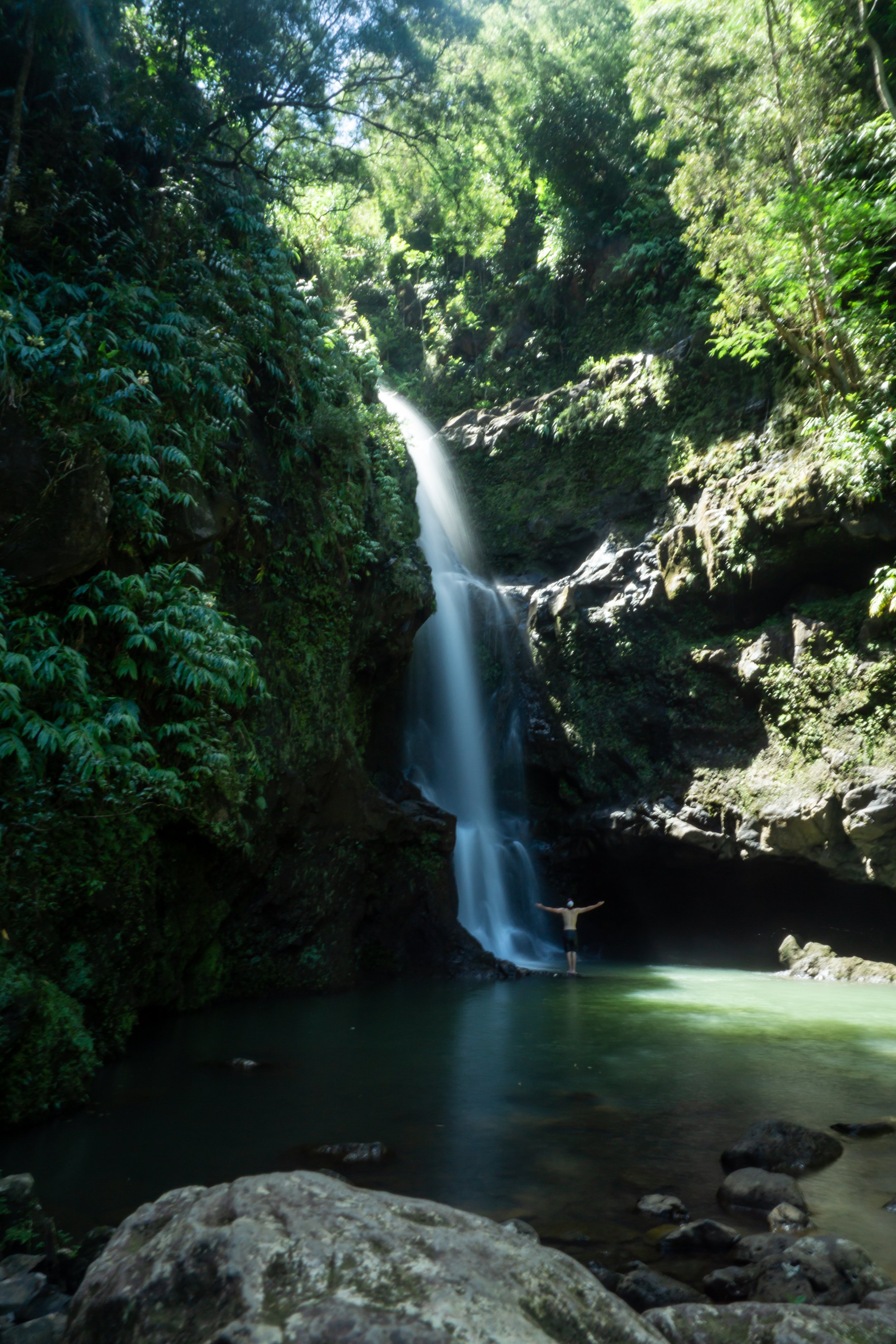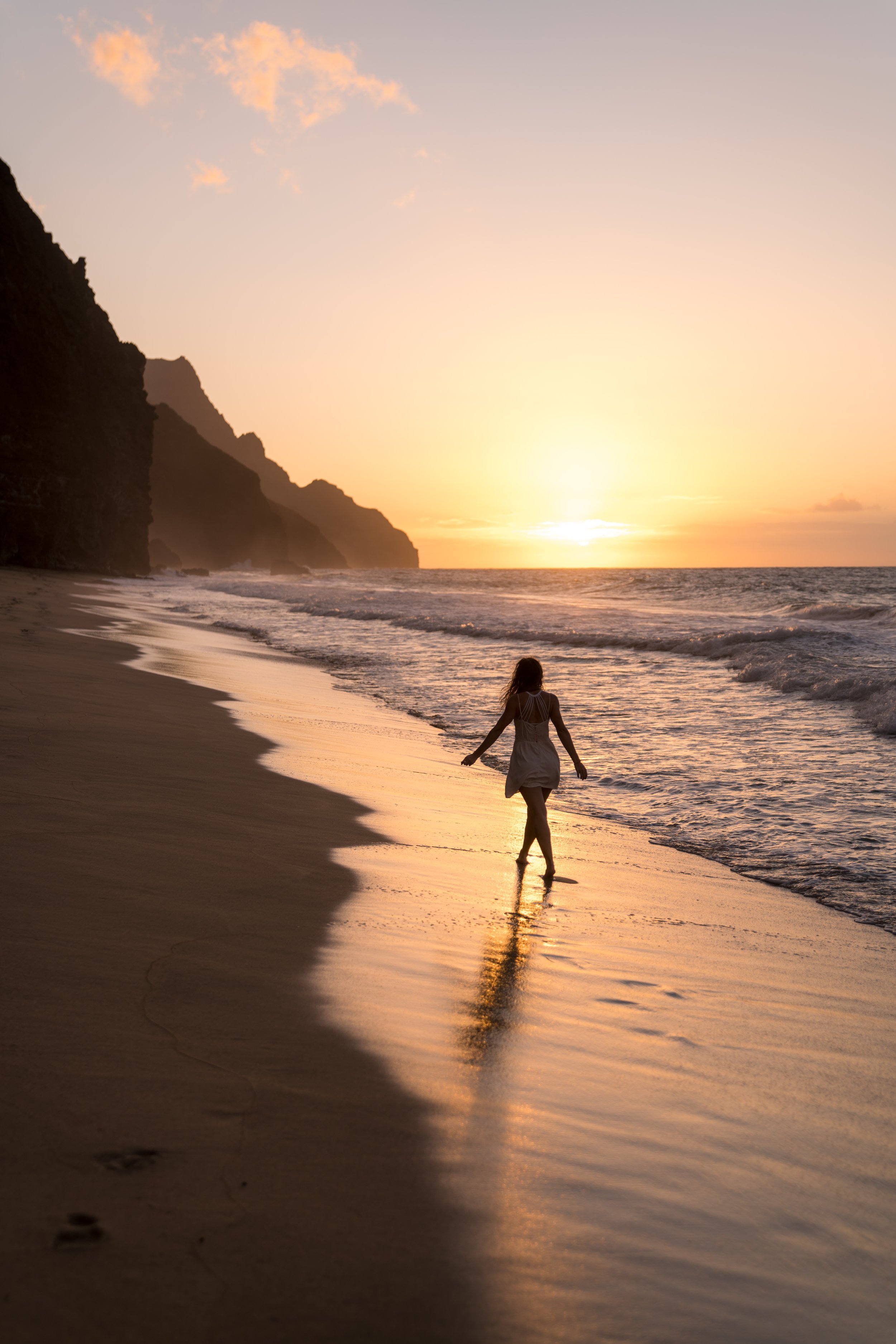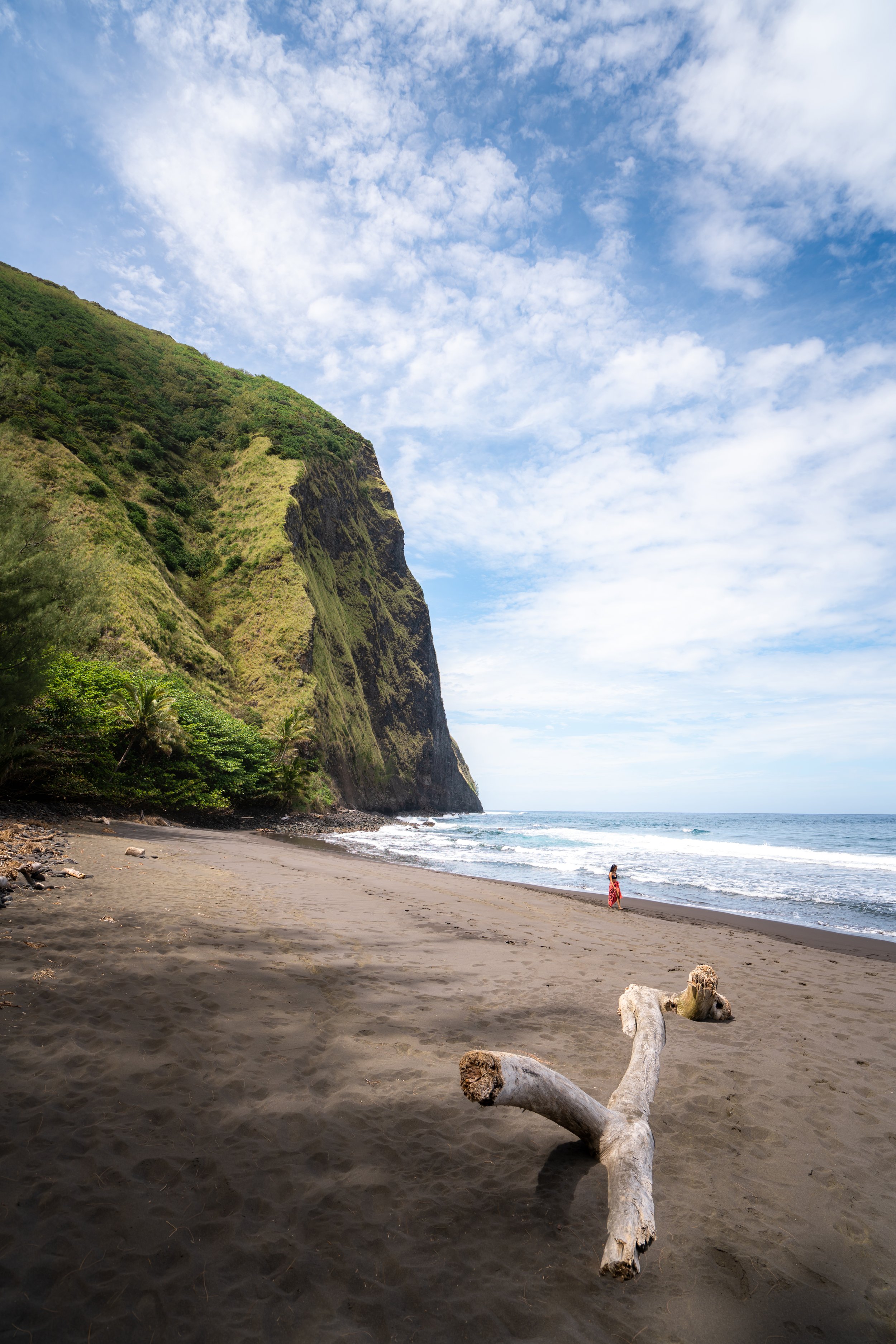Hiking the Koko Crater Stairs on Oʻahu, Hawaiʻi
Distance (Roundtrip): 0.9 mile / 1.4 km
Elevation Gain: ~930 ft. / 283 m
The Koko Head Stairs is a beautiful but steep Oʻahu hike that climbs the slopes an ancient volcanic crater, following the steps of a historic WWII-era tramway that was built in the early 1940s by the U.S. Army.
Since then, the Koko Crater Stairs have become a favorite among both locals and visitors from around the world, with many Oʻahu residents hiking the railway as a quick morning or evening workout at either sunrise and sunset.
To that point, I personally only recommend hiking the Koko Crater Stairs early or late in the day, as the steep and challenging trail is nothing to take lightly during the heat of the day!
How Long Does it Take to Hike Koko Head?
For most people, hiking Koko Head should take somewhere between 30 minutes - 1 hour.
However, if you hike the stairs without taking any breaks, the whole trail should take under 25 minutes.
What is the Fastest Koko Head Time?
Going off of Strava, the fastest known Koko Head time is 8:32 set by Conrad Newfield who is also the same Koʻolau Summit Trail (KST) record holder!
This makes my time at 10:43 look pretty weak!
Koko Head Trailhead Parking
Parking for the Koko Crater Railway Trail is located in the back parking lot of Koko Head District Park in Hawaiʻi Kai.
That being said, it’s important to know that toward sunset on any given day, this parking lot can get busy and even fill completely if there are a lot of baseball games going on within the park.
Google Maps Directions: Koko Head Trailhead
My Hawaiʻi Hiking Checklist
Osprey 3L Water Bladder - The Osprey 3L water bladder is the most universal hiking and backpacking water bladder on the market, and it’s my go-to because of the slide-off seal that allows it to be quickly filled from the top. Additionally, individual parts are easily replaceable, such as the bite valve.
Blister / Heel Protectors - I swear by these cheap, amazing heel protectors to prevent blisters for nearly every kind of hiking and backpacking that I do!
Black Diamond Headlamp - Personally, I recommend the Black Diamond Storm because it is one of the brightest, lightest, and longest-lasting headlamps on the market—and trust me, the weight-to-battery-life ratio really does matter!
Hiking / Trail Running Shoes - Depending on the type of trail, I prefer to use either the Keen Targhee for longer, more rugged hiking or the HOKA Zinal Trail-Running Shoe for lighter, less intense trails. In either case, both have been amazing to me for many years across countless environments, and both can be found in men’s and women’s sizes. - (Men’s Keen / Women’s Keen) (Men’s HOKA / Women’s HOKA)
Waterproof Rain Shell - You never know when it may rain, and I’ve learned over the years that a rain shell is far better than a rain jacket. By this, I mean that it’s best to have something that the water will roll right off of, which is why I recommend the Patagonia Torrentshell 3L available in both men’s and women’s sizes.
High SPF Sunscreen - Packing high-SPF sunscreen is a must for long days outside!
Getting to the Trailhead
From the parking lot, walk around the baseball fields to reach an asphalt road that leads to a dirt path, which takes you to the base of the stairs.
Turn right up this path to reach the stairs.
Hiking the Koko Crater Stairs
Thanks to the amazing volunteer work by the Kokonut Koalition, the Koko Crater Stairs are in better shape than ever, from their eroded and deteriorated state.
This means that hiking the Koko Head Stairs is now a much better and more enjoyable experience, thanks to all of the private donations and hard volunteer work that went into the trail’s restoration.
Kohelepelepe Trail (Koko Crater Stairs)
On a different note, what you see in the photo below is what you get, meaning there are truly no directions that you would need to know in order to hike the Koko Head Stairs.
That being said, the stairs start off relatively mild, but they only get steeper and more challening the closer you get to the summit.
Koko Crater Bridge (Murphy’s Bypass)
About halfway up the trail, the Koko Head Stairs reach the infamous Koko Crater Bridge.
If you are coordinated and comfortable with heights, crossing over the bridge can be done fairly quickly, so long as you don’t miss a step.
Alternatively, if you’d rather bypass the bridge altogether, there is a path around to the right side of the bridge, known locally as Murphy’s Bypass.
Warning
Bees have been known to be a problem on the Koko Crater bridge.
By this, I mean that hives are not uncommon in this area, and even with constant removal efforts from the city, they always seem to come back.
That being said, I have personally never had an issue with them because I try to move through this area as quickly as possible.
This final ascent is generally regarded as the most difficult part of the entire Koko Head hike, as it is the steepest section of all 1,048 steps to the top!
The top of the main set of steps is where the Oʻahu community widely agrees that recorded times stop, which goes hand in hand with the fastest known Koko Crater time on Strava.
This is because the final steps that continue to the true summit have not always been in place, and they are a very much restored and 'recent' addition to main railway up Koko Crater.
Through the volunteer efforts mentioned previously, the Kokonut Koalition has restored this final set of the stairs to the summit, which had been deteriorated and overtaken by the surrounding overgrowth.
Puʻu Mai (Koko Head Summit)
Unfortunately, the large metal grate that can be seen in the cover photo above has been replaced with the viewing platform that you can see here.
Most local people were pretty upset with the change, as there wasn’t any community input before the replacement took place.
Either way, this small platform is what we have now, but there are countless other areas to explore on the summit that can for great photo opportunities!
What Islands Can You See from the Top of Koko Crater?
On a clear day, you can see Molokai, Lānaʻi, and sometimes Maui from the top of Koko Head.
That being said, some in the comment section below have said that you can, on the clearest of all days, see the Big Island from the summit.
However, I am skeptical, as I have yet to see it myself, and I have climbed the Koko Crater Stairs hundreds of times. I say this because I have positively seen the summits of Hawaiʻi Island from Oʻahu, but only from a very different and much higher vantage point on the clearest day imaginable.
Hiking Down
Since the stairs are so steep, I personally find the hike back down to be almost worse than the strenuous hike up.
That said, some hikers may prefer to carry trekking poles for the way down, but in any scenario, take it slow, as injuries from falls are seemingly always worse going down than those on the hike up.
Native Plants on the Koko Crater Trail
For such a short, low-elevation trail, it feels surprising by Hawaiʻi standards to find a few different native plants along the Koko Crater Stairs.
However, if you look off to the sides of the trail you may see ʻAʻaliʻi and ʻUhaloa growing on either side of the stairs, which are the two most notable natives that can be found.
If you would like to learn more about these and many other native Hawaiian plants from across the islands, I encourage you to check out my separate post linked below.
Read My Separate Post: Native Hawaiian Plant Guide
More Oʻahu Adventures
If you’re interested in reading about some more amazing Oʻahu adventures, check out my separate posts below!
Best Hotels & Restaurants in Waikīkī
If you’re trying to decided where to stay on Oʻahu, check out my top 10 list for the best resorts and restaurants in Waikīkī.
I break down what makes one hotel a better choice over another, so that you can find the best fit for your stay on the island.
Read My Separate Post: Best Waikīkī Hotels & Restaurants
HNL Airport-Hotel Shuttle
Prices on ride-share apps like Uber/ Lyft cannot beat the price of booking your hotel shuttle prior to arrival. I say this because there are additional fees for ride-share airport pick-ups at Honolulu Airport (HNL), which is why I recommend booking your transportation in advance using the options below.
Additionally, the last option below will go as far as the Ko ʻOlina Resorts on the West Side and Turtle Bay on Oʻahu’s North Shore!
Best Way to Book Rental Cars!
I travel quite a bit, and I know firsthand that finding a good rental car deal can be a challenge, but that’s why I recommend comparing all of your options with Discover Cars.
In short, Discover Cars is a well-known, reputable business that allows you to search for the best deal across companies, and they have the best full-refund cancellation policy I’ve ever seen, valid up to 72, or sometimes even 48, hours prior to your reservation!
Book Here: Discover Cars
Visiting Other Islands
If you are visiting Oʻahu or heading to another island, check out some of my personal recommendations for Oʻahu, Maui, Kauaʻi, Molokai, Lānaʻi, and Hawaiʻi Island (Big Island) in these separate posts.
If you’re trying to decide which island is right for your visit, check out my overview about each island in the post below.
Read My Separate Post: What is the Best Hawaiian Island to Visit?
What is the Best Time of Year to Visit Hawaiʻi?
The weather in Hawaiʻi can often appear to be warm and beautiful throughout the year, but in my experience, there is a lot more to consider when planning what time of year to visit the islands, such as what island you are considering, what sides of each island do you plan to stay, what activities are you most interested in, the wildlife, and countless other nuanced variables that can all impact the type of trip you can expect to have.
For these reasons, I highly recommend reading through my separate article to not only understand my thoughts regarding the best time of year to come to Hawaiʻi but also what you need to consider based on the time of year that you plan to visit.
Read My Separate Post: What is the Best Time of Year to Visit Hawaiʻi?
10 Best Tours & Excursions on Oʻahu
There are a lot of different tour options to choose from on Oʻahu, but to make it easier to decide, I made a list of my favorite tours because some things simply are better with a local guide!
Read My Separate Post: Best Tours on Oʻahu
Safety
All hikes in Hawaiʻi should not be compared to trails outside of the islands, and hikers should exercise due caution on every adventure, given that many are extremely dangerous.
By this, I mean that Hawaiʻi is known for hot, humid weather, steep, dramatic, and unstable cliffs, and flash floods, which can occur without warning. Therefore, it is important that you check the local forecast, understand the physical condition of your entire group, and pack sufficient food and water before attempting any adventure.
Disclaimer
All information provided on this blog is for informational purposes only and is not intended to be a substitute for information or advice from qualified professionals or managing agencies.
Noah Lang Photography LLC makes no representations or warranties regarding the accuracy or completeness of the information provided here, and readers should use their own discretion, judgement, and seek professional advice where it is appropriate.
Furthermore, Noah Lang Photography LLC shall not be held responsible for any injuries, lost individuals, or legal issues arising from the use of information provided on this website, and if applicable, the above safety disclaimer should be referenced to provide a generic overview of the risks involved.
All said, the content on this blog is for the sole use of Noah Lang Photography LLC, and unauthorized use or reproduction of this content is strictly prohibited.
Disclosure
This post is not sponsored.
However, some of the links in this post are affiliate links, which means that I may earn a small commission if a purchase is made through one of those links. This commission comes at no additional cost to you, and I only recommend products that I personally use and believe will add value to my readers. Thank you for your support, which enables me to continue creating more!
To read the full privacy policy, click here.

About This Blog
Noah Lang Photography, also known as @noahawaii, is 100% reader-supported!
I do not accept guest articles or sponsored content of any kind on my blog, which is why, if you enjoy the outdoor and travel content I create, please consider buying me a coffee!
I appreciate your support, which helps me continue to keep this blog alive!














